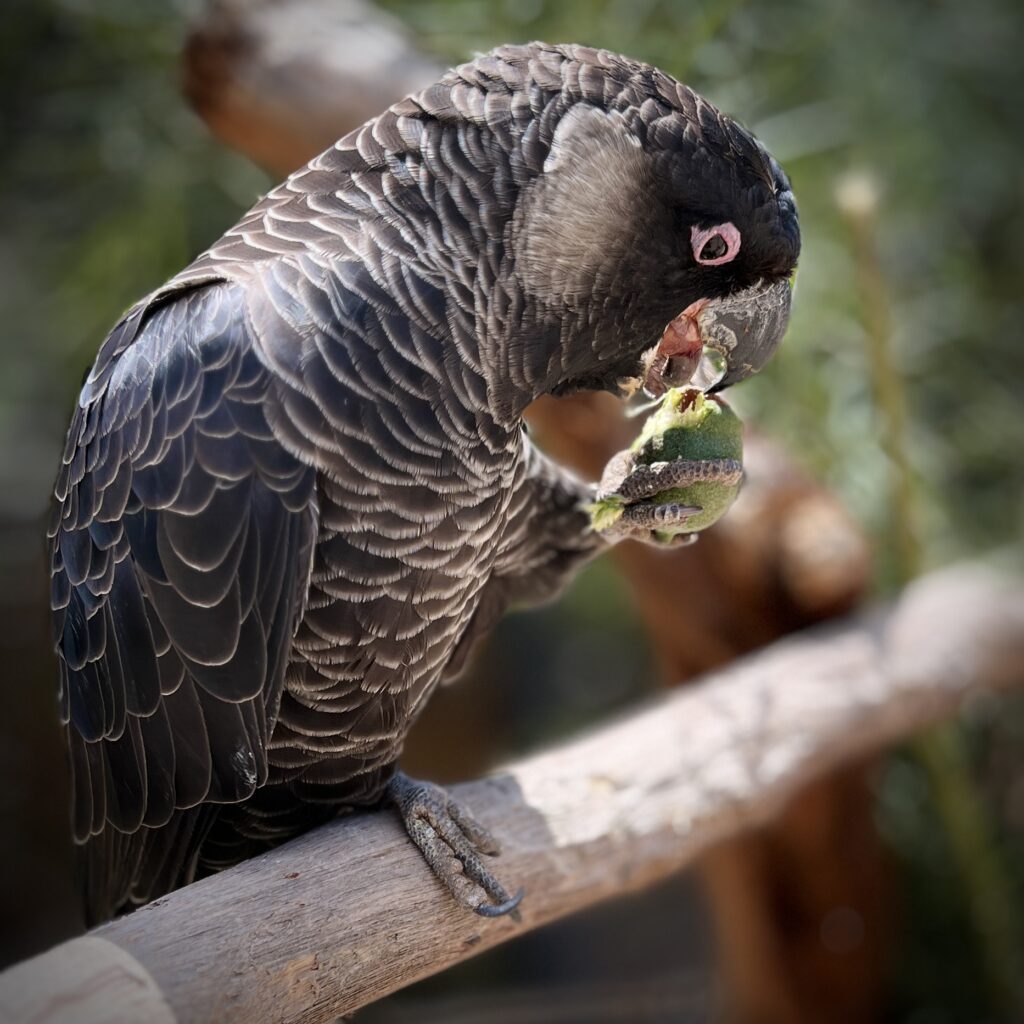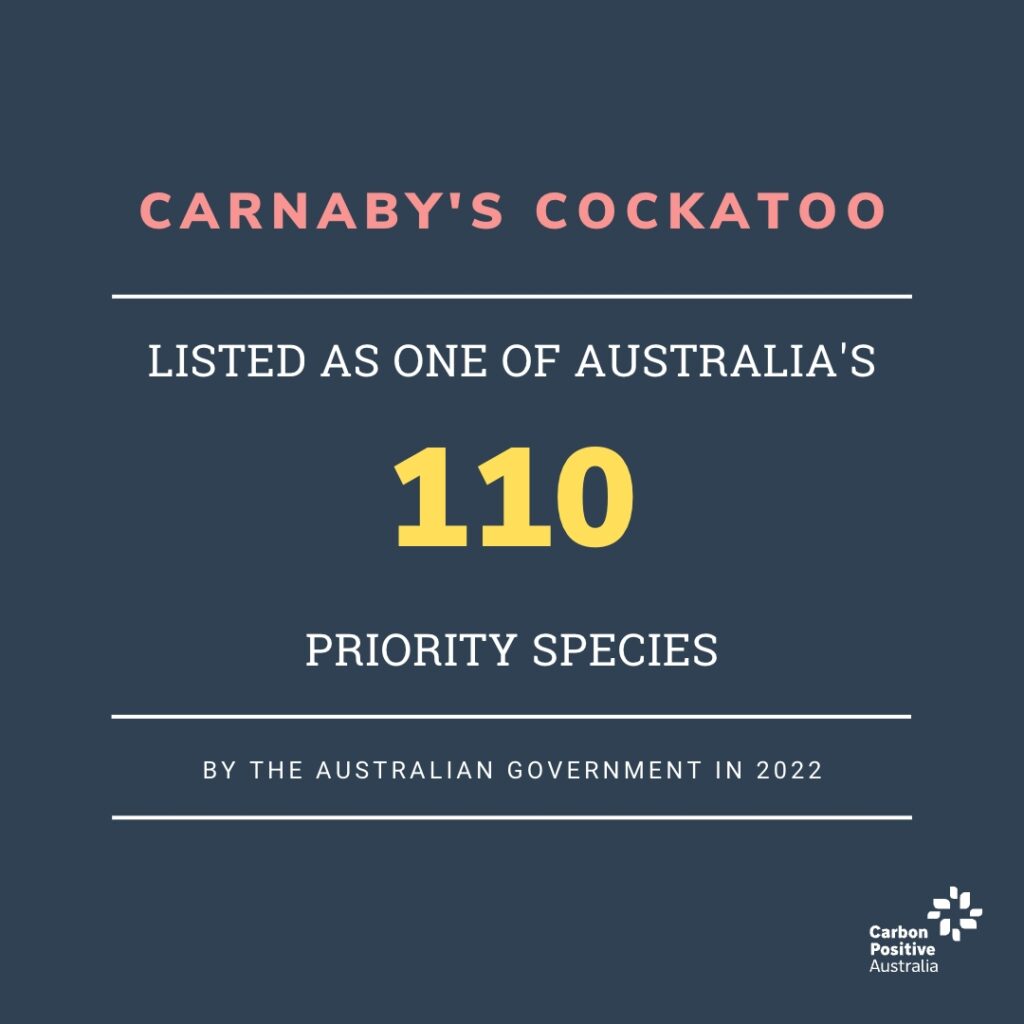Endangered Australian Cockatoo Loses One-Third of Population in Just 1 Year.
Scientific America, 2012
Ten years ago, Scientific America reported on the plight of Western Australia’s iconic endangered Carnaby’s Black Cockatoo (Calyptorhynchus latirostris). The species’ population had dropped 37% in the past year, from 12,954 roosting birds in 2010 to just 8,365 in 2011. In the last ten years, the plight of these beautiful birds has increased ten-fold, despite the best efforts from conversation organisations and individuals.
One notable organisation that has been taking action for not only the Carnaby’s Black Cockatoo but also the Baudin and Red Tail is Kaarakin Conservation Centre, a specialist wildlife centre located in Western Australia, with a team dedicated to the rescue and rehabilitation of sick and injured wild native black cockatoos.
They are the only facility dedicated to the conservation and rehabilitation of black cockatoos in Australia and are currently home to 200 black cockatoos at various stages of rehabilitation. As a non-profit organisation they rely on volunteers and donations (including private tours and other fundraising events) to continue their rescue and rehabilitation work.
First started by founding member Glen Dewhurst in 2006, Kaarakin is based on the Noongar “kaarak” which means “black cockatoo.” The duties for the team at Kaarakin start when they receive a call, usually from a member of the public, informing them about an injured or distressed black cockatoo. They will head out with the Karrakin black cockatoo ambulance to rescue and pick up the bird. Depending on the bird’s injuries, they may spend a few days to several weeks at the local zoo before being given a clean bill of health. Some are found to be too severely injured to survive and need to be euthanised, but the specialist care they receive at the zoo gives them the best chance of recovery.
Once the zoo clears them, the patient bird returns to Kaarakin for rehabilitation.
The rehabilitation process differs for every case. Juvenile birds need to be fed formula for a specific time, while adult birds might need to put on weight, wait for broken wings to mend, or require a fitness boost before being released.
It can even take a few years before a cockatoo is fit for release. Therefore, Kaarakin has several types of aviaries to accommodate cockatoos that are at various stages of rehabilitation. Besides their clinic, they also have rewilding aviaries, pre-release flight aviaries where the cockatoos learn to fly short distances, and a unique 60-metre-long pre-release aviary that the birds must be able to traverse before release. In this long aviary, black cockatoos are encouraged to fly every day to build up their strength before the release day.
While the team at Kaarakin would love to see all the black cockatoos that they rescue flying free, unfortunately, some cannot be released due to the injuries that they have sustained. These birds become Kaarakin’s resident birds and play a significant role at the conservation centre as a part of their education program, where the public can interact with them up close.
Cockatoos that can be released into the wild are always released at a location where there is a current wild flock and in the same area where the cockatoo was recused to increase their chances of finding their initial flock. Every cockatoo is released in the evening so that they can join the wild flock and settle down for the night.




Our Planting Project with Kaarakin Conservation Centre
In 2014, Carbon Positive Australia had a hand in assisting Kaarakin Conservation Centre in planting 38 hectares of the Banyowla Regional Park. This project focussed on native plant species that are known to be essential to the feeding, breeding, and roosting cycles of the three endangered cockatoo species.
The land had previously been cleared for orchards and grazing – restoring it to bushland provided valuable habitat for the black cockatoos. After planting was completed, there were many challenges in maintaining the site. Kaarakin has reported that the site is thriving, and when you walk through what is now a forest, it is hard to believe it was once degraded land, where now there are chewed gum nuts, evidence that cockatoos are using this site as a foraging area.
As an organisation, we are dedicated to protecting and conserving Australia’s biodiversity. We now have plans to purchase land in the WA’s Northern Wheatbelt, which is noted as one of the most significant food sources for Carnaby’s Black Cockatoos.
A Chat with Sam Clarke, Karrakin Conservation Centre Education Officer
We might be experts in biodiverse plantings, but we are not experts in ornithology. As such, we met with Sam Clarke, Animal Management & Education Officer for Kaarakin Conservation Centre, to discuss all things cockatoos. You can read an extract from our on-site interview with Sam below.
Last year Kaarakin had around 300 birds that needed rehabilitating. Can you tell us, on average, how long the process takes for rehabilitation and what this looks like?
It’s very complex. It depends on the age of the birds that come in; the young birds are dependent on their parents for up to 18 months. So those birds might be here for a couple of years. In other cases, some birds get out of here within a few months, and because we ensure they go out together as a flock, sometimes they need a bit longer. So they go out and stay together, which we know is huge for them close to release. It can be anywhere from a few months to a few years.
When these birds are released, what data do you collect?
All our birds go out with microchips and have leg bands with a unique number. So if they get released, we know how old they are, and where they’ve moved, which helps. We do work closely with Murdoch University, and they have been putting tracking devices on some of the birds as well to study their movements.
A huge one is land clearing, habitat loss, habitat fragmentation, illegal shooting, and, unfortunately, competition for nesting hollows. Raven attacks which people don’t realise, are becoming an increasing problem, particularly with red tails as they move into the suburbs. Ravens, although native, are eating all of our waste, and unfortunately, they’re attacking black cockatoos.
What more needs to be done to protect these birds?
The big one is getting more natives in people’s gardens again. People think you’ve got to go and plant huge, big jarrah or marri trees, but you can go ahead and plant little hakeas in your garden and get a native garden that really helps black cockatoos.
What role do all species of the three cockatoos here have to play in the natural ecosystem?
Well, they’re nature’s pruners. They prune many trees, disperse those seeds, and promote regrowth in those trees. They’re also very iconic, what we call a flagship species. If we protect black cockatoo habitat, then we protect habitat for lots of other species.
A loss of species can have significant impacts on other species. Do you know what losing these birds would mean for our environment?
It would be huge. Again, they’re one of the only species with a big enough field to get into marri nuts, and as previously mentioned, they are iconic. They are large birds that can travel long distances and adapt to various foods, and if we can’t save them, it shows you can’t save much else.
Carbon Positive Australia planted part of the Banyowla Regional Park in 2014. Can you tell me how these trees have done and how it is going in the regional park?
It’s doing amazing as when you walk through that once completely degraded area; you now have a huge forest. You can find evidence of chewed gum nuts, so our black cockatoos are using this as a foraging site, which is awesome.
A huge thank you to Sam, Glenn, and the entire team at Kaarakin for their time on further educating the our team on all three species of endangered black cockatoos.
Kaarakin is open to the public by appointment only. You can book a tour experience, organise a school education experience, or gather your colleagues for a corporate volunteering day if you are located in Western Australia.
If you’d like to do your part towards saving these species, you can donate to Kaarakin, report sightings of black cockatoos to DBCA or join the Great Cocky Count with Birdlife WA.
To help Carbon Positive Australia plant and protect land used by the Carnaby’s please head HERE.
